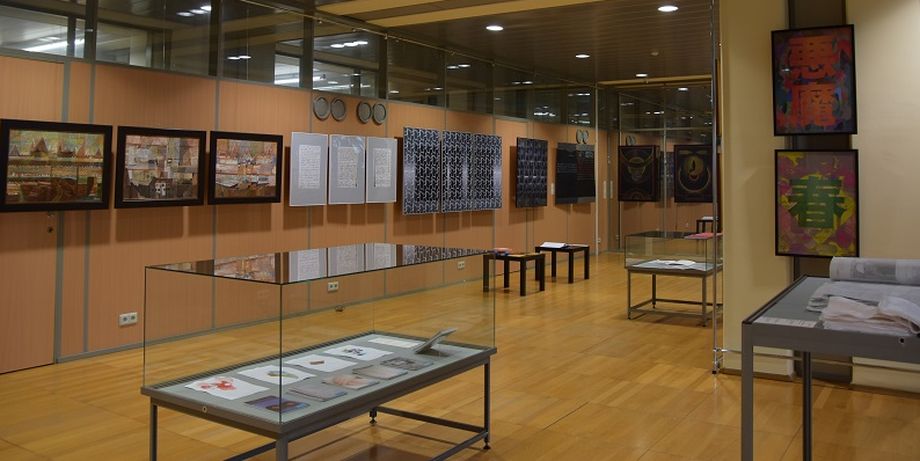
For several years, the Jagiellonian Library and the Association of Polish Artists and Designers have been organising a series of exhibitions devoted to books. They are presented in the Jagiellonian Library - definitely the most suitable place for that purpose. This theme of this year’s exhibition is The art of Book Illumination.
The exhibition’s initiator and curator Dr hab. Teresa B. Frodyma has put in a lot of dedication and effort to popularise and spread knowledge about problems related to book as a medium of written communication and expression, as well as promote contemporary artists distinguished in book-related art. The tradition of illuminating, that is, decorating books, documents, manuscripts, and incunabula, often making them true works of art, dates back to the Middle Ages. The meticulously calligraphed texts of medieval books were often accompanied by decorative lines, initials, pictures, painted miniatures, and decorated margins, with many golden elements, authored by hard-working and often extremely talented monks, who were treated as mere artisans in terms of their social status.
Book illumination is also present in contemporary book editing, especially in the area of the so-called artist’s books. Obviously, they largely differ from their medieval counterparts, reflecting the modern aesthetics and technology.
27 artists from different fields (painting, sculpture, photography, multimedia arts, and others) have been invited to interpret this topic in their works, which are not limited to book pages. Their imagination allows a bold interpretation of the concept of illumination, and the diversity of forms of artistic creation aims to better reflect the ambiguity of the concept of illumination. Can this be considered the continuation of the work by old masters? Or should it be acknowledged that decoration has been devaluated or is now understood more abstractly, rather than purely aesthetically? Should it only inspire aesthetic experiences or rather provoke interpretation and reflection.
The juxtaposition of these works with original medieval books that are part of the Jagiellonian Library collection provides an interesting opportunity to compare the creative thought of artists belonging to different epochs, especially in the context of book history.


